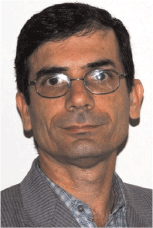Improvements in understanding short-range permeability variability in coal seam gas reservoirs
Stephen Tyson A , Suzanne Hurter A , Fengde Zhou A and Morteza Jami AThe University of Queensland.
The APPEA Journal 56(2) 555-555 https://doi.org/10.1071/AJ15061
Published: 2016
Abstract
After several years of production history on at least some of the more than 7,000 CSG production wells in the Surat and Bowen basins, reservoir engineers continue to note that understanding detailed permeability spatial variation near the well bore and its impact on actual production performance remains poor. There is a growing realisation that permeability of coals has an even higher variability than was initially expected, and that this variability occurs across a shorter range than that of the typical inter-well spacing (~750 m). As a result, flow between wells, pressure depletion, water and gas production rates and ultimate recovery is difficult to predict. Forecasting short-range continuity of different categories of absolute permeabilities through modelling is the key challenge. Other physical or geophysical parameters may change similarly with the same range.
Generation models tend to over-estimate the lateral continuity of coals and associated carbonaceous shales resulting in a poor match between the model predictions and the observed production data. This may be due to incomplete information on the short-range variability of porosity and permeability and the appropriate up-scaled values for these parameters used in the reservoir simulation models.
This extended abstract discusses controls on permeability, both the geological influences and the impact of drilling and completion on permeability. Taking a holistic approach to the problem of understanding permeability variability, the relative impact of these controls is estimated and discussed. With the benefit of rudimentary ranking of these controls, techniques have been developed to improve measurement and modelling of permeability variability. These approaches can help improve the predictive modelling capability of reservoir performance.

Stephen Tyson joined UQ in January 2013 after working for 30 years in the petroleum industry, mostly in reservoir characterisation and stochastic modelling. Stephen is leading CCSG (Centre for Coal Seam Gas, University of Queensland) research projects in the area of geoscience, including mathematical modelling—particularly reservoir modelling—and geological profiling. Stephen was appointed as an Honorary Research Fellow of the Australian School of Petroleum in 2003, an indication of the respect and experience he has within this area of research. |

Suzanne Hurter graduated from the University of Sao Paulo (Brazil) with a Bachelor of Physics, and then went to complete a Master of Science in Geophysics with a focus on fluid and heat transport and geochemical tools to predict subsurface temperatures. The thermal structure and evolution of sedimentary basins including hydrocarbon maturations were the subjects of her PhD research at The University of Michigan (US). Suzanne has worked in academia in Germany (Helmholtz Centre for Geosciences in Potsdam and the Leibnitz Institute of Applied Geophysics in Hannover) and Brazil (University of Sao Paulo). Here research focus was assessing geothermal resources across Europe, being responsible for science program for enhanced geothermal systems, modelling volcanic hydrothermal systems. Suzanne joined the oil and gas industry and worked in various roles in Shell (Netherlands), Schlumberger (Netherlands and Australia), QGC (BG-Group) and Arrow Energy (Shell-Petrochina). Presently, Suzanne holds a professorial appointment at the School of Earth Sciences in the University of Queensland. Her current research interests are coal seam gas production and carbon sequestration, especially the modelling of subsurface aspects. |

Fengde Zhou received his PhD in petroleum engineering from the China University of Geosciences (CUG) in Wuhan, China. He is a research fellow at The University of Queensland’s (UQ) School of Earth Sciences. Before he joined UQ, Fengde was a visiting fellow from June 2008 to December 2009, and a postdoctoral research associate from 2011–15 at the School of Petroleum Engineering, University of New South Wales (UNSW). Fengde is one of the editorial board members of the Journal of Petroleum Science and Engineering. He is interested in reservoir characterisation, reservoir geological modelling, and numerical simulation for conventional and unconventional oil and gas reservoirs. |

Dr Morteza Jami was born in Abadan, Iran, in 1961. He received his BSc degree in geology from the Shiraz University, Iran, in 1986, and MSc and PhD degrees from the Shiraz University, Iran, and University of New South Wales, Australia, in 1991 and 2005, respectively. In 1991, he joined the School of Earth Sciences, Shiraz University, as a lecturer. Since 2005, Morteza has been with the New South Wales Department of Primary Industries, Geos Mining Consultants, Sydney Gas Ltd, and Santos Ltd where he worked as a senior geologist and senior development geologist in CBM fields of NSW and Queensland. In 2015, Morteza worked as an adjunct lecturer at Coal Seam Gas Center of University of Queensland. During this time he worked with Professor Tyson on Surat Basin coal characterisation, permeability, and near wellbore damage. In January 2016 Morteza joined Green Dragon Energy as Chief Geologist. He is presently working on CBM exploration, and development of several large coal acreages in China. He is a Member of the Iranian geological society and Petroleum Exploration Society of Australia (PESA). |
References
Antonsen, F., Olsen, P.A., Stalheim, S.O., Constable, M.V., Irondelle, M., Cook, M., Bjorstad, T.R., Dupuis, C., Marza, P., Seydoux, J., Oergagic, D. and Denichou, J.-M., 2014—Net Pay Optimization and Improved Reservoir Mapping from Ultra-deep Look Around LWD-measurements. Abu Dhabi International Petroleum Exhibition and Conference, Abu Dhabi, UAE, 10–13 November, SPE-171856.Armstrong, M. and Galli, A., 2002—Sequential non-gaussian simulations using the FGM copula. Cerna working paper, September 2002. Paris: Cerna.
Azike, O., 2014—High Resolution Near Wellbore 3D Structural Modelling with LWD Resistivity Image and Deep Azimuthal Resistivity. EAGE Borehole Geology Workshop, Abu Dhabi, UAE, 12–15 October, BG25.
Bárdossy, A. (2006). Copula-based geostatistical models for groundwater quality parameters. Water Resources Research 42, W1146.
Bárdossy, A., and Li, J. (2008). Geostatistical interpolation using copulas. Water Resources Research 44, W074.
Begg, S. and Tyson, S., 2009—An introduction to upscaling. Christian Malford, Wiltshire: Pipers’ Ash Ltd.
Bosch, E.H, Oliver, M.A., and Webster, R. (2004). Wavelets and the generalization of the variogram. Mathematical Geology 36, 147–86.
Ccsg (Centre For Coal Seam Gas), 2016—Short-range permeability variation (coal seam gas application). Literature review, CLX 149,316, March 2016. Brisbane: CCSG, The University of Queensland.
Connell, L.D., Pan, Z., Lu, M., Heryanto, D. and Camilleri, M., 2010—Coal Permeability and its Behaviour with Gas Desorption, Pressure, and Stress. SPE Asia-Pacific Oil and Gas Conference and Exhibition, Brisbane, Queensland, 18–20 October, SPE-133915.
Dupuis, C., and Denichou, J.M. (2015). Automatic inversion of deep-directional-resistivity measurements for well placement and reservoir description. The Leading Edge 34, 504–12.
Furniss, J.P., Schouten, J. and Bottomley, W., 2014—Reservoir Characterization Using Distributed Temperature Sensing in CSG Development: Application in the Surat Basin, Queensland, Australia. SPE Asia-Pacific Oil and Gas Conference and Exhibition, Adelaide, South Australia, 14–16 October, SPE-171537.
Gomez-Hernandez, J.J. and Xu, T., 2015—Inverse Sequential Simulation-inversion by Conditioning. Petroleum Geostatistics 2015, Biarritz, France, 7–11 September. Production Data Integration II session.
Gouth, F., Belushko, I. and Herwin, H., 2014—Dynamic Behavior of a Multi-layered Coal Seam Gas Reservoir in the Bowen Basin. SPE Asia-Pacific Oil and Gas Conference and Exhibition, Adelaide, South Australia, 14–16 October, SPE-171538.
Gray, F.D, Roberts, G., and Head, K. (2002). Recent advances in determination of fracture strike and crack density from P-wave seismic data. The Leading Edge 21, 280–5.
Harpalani, S., and Schraufnagel, R.A. (1990). Shrinkage of coal matrix with release of gas and its impacts on permeability of coal. Fuel 69, 551–6.
Heffer, K., 2012—Fracture Characterization Through Rate Correlation Analysis. SPE Europe/EAGE Annual Conference and Exhibition, Copenhagen, Denmark, 4–7 June, SPE-154429.
Heffer, K., Zhang, X., Koutsabeloulis, N., Mani, I. and Li, L., 2007—Identification of Activated (Therefore Potentially Conductive) Faults and Fractures Through Statistical Correlations in Production and Injection Rates and Coupled Geomechanical Modelling. SPE Europec/EAGE Annual Conference and Exhibition, London, United Kingdom, 11–14 June, SPE-107164.
Heffer, K., Greehough, J., Main, I., Zhang, X., Hussein, A.M., Nasrelding, G. and Koutsabeloulis, N., 2010—Low-Cost Monitoring of Inter-well Reservoir Communications Paths Through Well Rate Fluctuations: Case Studies from Mature Fields in the North Sea. SPE EUROPE/EAGE Annual Conference and Exhibition, Barcelona, Spain, 14–17 June, SPE-130734.
Hodgetts, D. (2013). Laser scanning and digital outcrop geology in the petroleum industry: a review. Marine and Petroleum Geology 46, 335–54.
Hörning, S. and Bárdossy, A., 2014—Inverse Groundwater Flow Modelling via Conditional Simulation. AGU Fall Meeting, San Francisco, California, 15–19 December, abstracts, volume 1.
Jones, R.R., Pringle, J.K., Maccaffrei, K.J.W., Imber, J., Wightman, R.H., Guo, J., and Long, J.J. (2011). Extending digital outcrop geology into the subsurface. SEPM Concepts in Sedimentology and Paleontology , 31–50.
Laubach, S.E., Marrett, R.A., Olson, J.E., and Scott, A.R. (1998). Characteristics and origins of coal cleat: a review. International Journal of Coal Geology 35, 175–207.
Li, J., Liu, D., Yao, Y., Cai, Y., and Qiu, Y. (2011). Evaluation of the reservoir permeability of anthracite coals by geophysical logging data. International Journal of Coal Geology 87, 121–7.
Lu, M. And Connell, L.D., 2010—Dual Porosity Processes in Coal Seam Reservoirs. SPE Asia-Pacific Oil and Gas Conference and Exhibition, Brisbane, Queensland, 18–20 October, SPE-133100.
Mazumder, S. and Farajzadeh, R., 2010—An Alternative Mechanistic Model of Permeability Changes of Coal Beds During Primary Recovery of Methane. SPE Asia-Pacific Oil and Gas Conference and Exhibition, Brisbane, Queensland, 18–20 October, SPE-133489.
Menafoglio, A., Secchi, P., and Dalla Rosa, M. (2013). A Universal Kriging predictor for spatially dependent functional data of a Hilbert Space. Electronic Journal of Statistics 7, 2,209–40.
Menafoglio, A., Grujic, O. and Caers, J. 2015—Forecasting Production Decline Rate in Unconventional Resources by Kriging of Functional Data. Petroleum Geostatistics 2015, Biarritz, France, 7–11 September. Pore Pressure – Unconventional – Geomechanics session.
Mohaghegh, S., Balan, B., and Ameri, S. (1997). Permeability determination from well log data. SPE Formation Evaluation 12, 170–4.
Palmer, I., and Mansoori, J. (1998). How permeability depends on stress and pore pressure in coalbeds: a new model. SPE Reservoir Evaluation & Engineering 1, 539–44.
Park, S.C, Park, M.K., and Kang, M.G. (2005). Super-resolution image reconstruction: a technical overview. IEEE Signal Processing Magazine 20, 21–36.
Philpot, J.A., Mazumder, S., Naicker, S., Chang, G., Boostani, M., Tovar, M. and Sharma, V., 2013—Coal bed methane modelling best practice. International Petroleum Technology Conference, Beijing, China, 26–28 March, IPTC 17137.
Ryba, A., Everts, A. and Alessio, L., 2011—Methodologies and tools for coalbed methane (CBM) field development planning studies. SPE Asia-Pacific Oil Gas Conference and Exhibition, Jakarta, Indonesia, 20–22 September, SPE-146545.
Sahni, I., and Horne, R.H. (2005). Multiresolution wavelet analysis for improved reservoir description. SPE Reservoir Evaluation & Engineering 8, 53–69.
Scott, M., Mazumder, S. and Jiang, J., 2012—Permeability increase in Bowen Basin coal as a result of matrix shrinkage during primary depletion. SPE Asia Pacific Oil and Gas Conference, Perth, Western Australia, 22–24 October, SPE-158154.
Thurmond, J.B., Loseth, T.M., Rivenaes, J., Martinsen, O., Aiken, C. and Xu X., 2008—Using outcrop data in the 21st century – new methods and applications, with an example from the Ainsa Tyrbidite System, Spain. In: Nilsen, T.H., Shew, R.D., Steffens, G.S. and Studlick, J.R.J. (eds) Atlas of Deep-Water Outcrops. AAPG Studies in Geology, 56. Tulsa, Oklahoma: APPG.
Verman, A.K., Cheadle, B.A., Routray, A., Mohanty, W.K. and Mansinha, L., 2014—Porosity and permeability estimation using neural network approach for well log data. AAPG—CSPG/CSEG/CWLS GeoConvention, Calgary, Canada, 14–18 May, Search and Discovery Article #412762014.
Zhou, J. (2015). Uncertainty in geosteering and interpretation of horizontal wells the necessity for constraints and geometric models. The Leading Edge 34, 492–9.


